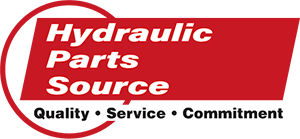The 5 Main Components of Hydraulic Systems
What do wheelchair lifts, wing flaps on aircraft, and car and truck brakes have in common?
Answer: They all employ hydraulic systems
Hydraulic systems transmit power via hydraulic pressure to accomplish work on a machine. The work function is accomplished with the hydraulic system as a whole. Pressure is created with a pump & motor combination; it is distributed to work functions, then returned to the tank after being cooled since the head is generated in the process of creating pressure and doing work.
What does a hydraulic system include?
Let’s take a quick look at the 5 main components of a hydraulic system:
Reservoir
The reservoir serves
muti-purposes.
The reservoir:
- Holds a fluid volume
- Transfers heat
- Allows for the settling of solid impurities
- Prompts moisture and air to escape from the fluid easily
Pressure regulator
Does exactly what its name implies. It regulates the pressure of the hydraulic fluid. This component assures that if fluid pressure rises higher than a specified level, the extra fluid goes back to the reservoir and stays there until the pressure lowers.
Valves
There are many types of hydraulic valves, and most machines have many of them. Commonly accepted as the most indispensable component in the hydraulic system, hydraulic valves manage the flow of fluid in a hydraulic system, from starting and guiding it to halting it.
Pump
The hydraulic pump facilitates the conversion of mechanical energy to hydraulic energy – via the flow of hydraulic fluid. One of our core specializations,
a pump relies on a motor or an engine to make hydraulic energy. Hydraulic systems host a variety of hydraulic pumps, most notably piston, vane, and gear.
Actuator
The actuator produces the machine’s mechanical motion through a hydraulic cylinder (for linear motion) or a hydraulic motor (for rotary motion).
Advantages of Hydraulic Systems
Once unpacked, hydraulic systems’ popularity and prevalence are much easier to understand.
Credited with being able to move heavier loads and supply more force than electrical, mechanical, or pneumatic systems, hydraulic systems don’t require complex systems that rely upon heavy levers, gears, or pulleys for managing large weight ranges. By using liquid to create pressure, hydraulic systems are known for their accuracy, easy maintenance, efficiency, and of course, power.Furthermore, a hydraulic system – when constructed properly – has many other attributes.
Among them are:
- Motion is transmitted without slack – unlike solid machine parts
- The mechanism of a hydraulic system isn’t prone to a great deal of wear
- Mechanical parts can break; the fluids used in a hydraulic system don’t
Hydraulic systems that are suited for the required work – and aren’t misused – provide action without vibration and aren’t affected by the load’s variation. Their smooth and flexible motions in straight-line and rotary power transmission minimize the need for control by hand which makes them more economical.
Need Help with Components? Count on HPS
As a premier source for hydraulic parts with the largest readily available current, obsolete, discontinued, or hard-to-find stock of hydraulic pumps, motors, and valves from Vickers, Denison, and Rexroth, Hydraulic Parts Source is dedicated to servicing and supporting customers with individualized attention, in-depth product knowledge, and industry expertise.Make sure to refer back to our blog regularly for new tips, troubleshooting topics, fundamentals & more material for fluid power professionals.

